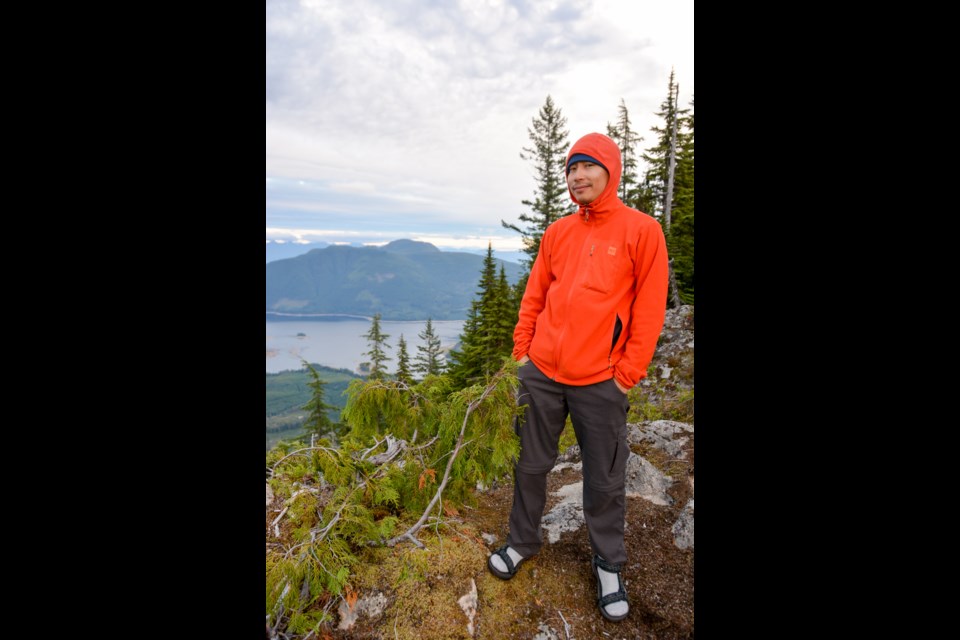Heading out on a trail hike, even a day hike, requires some preparation, including having a reliable map, knowing how long the hike will take and understanding terrain difficulty. Packing the right kind of gear for the season is also important, as is information from a good guidebook.
It's been seven years since author Stephen Hui's bestselling book, 105 Hikes In and Around Southwestern British Columbia, came out. On May 27, he launched the second edition, which includes 36 new hikes; four are on the northern Sunshine Coast: Fairview Bay, Emma Lake, Crossroads Peak and Confederation Lake.
Some folks have gone out into the wilds of BC in the past few years unprepared. That's why there are new guest chapters included on safety from North Shore Rescue and the environment with Canadian Parks and Wilderness Society-BC.
Hui has been hiking, backpacking and scrambling in the coastal mountains of BC for more than 30 years.
"Hiking the Sunshine Coast Trail, I consider it to be the most memorable hiking trip I've ever done," said Hui. "I love Powell River and backpacking the trail over 10 days was a really important experience for me."
However, this new edition returns with hikes for every season and all ages and skill levels. Most of the 105 hikes can be accomplished in a day.
"Fairview Bay is on the Sunshine Coast Trail, a kind of family friendly hike," said Hui. "It's also a bit different than the other hikes in the book, which tend to be very mountainous; this one is a coastal hike."
Hui said Fairview Bay is close to Saltery Bay Terminal and it is possible to walk to the trailhead directly from the ferry.
"The trail is a beautiful kind of up and down walk, amongst Arbutus trees, rocky shores with views of Jervis Inlet," said Hui. "Then you get to the hut, and it's the only one [on the SCT] that's sitting by the ocean."
In the book description, the second edition encourages readers to tread lightly on the land and discover the mountains, lakes, forests and coast with curiosity and respect.
"I've changed 36 of the hikes from the previous edition, and there are updates throughout the book," said Hui. "It was a great chance to redo the maps and make them better."
Hui said one of the most requested features from readers was to have icons that indicate dog rules.
"You can tell quickly if you need to leash or not, or if they're allowed in general, or if they're not allowed," said Hui. "Then there is also information about the best season for each hike, when it's most likely to be snow free."
Hui said he also included improved transit directions and more waypoints for old-school folks who still punch them into their GPS.
"I end up getting about two years of hiking research in, and I hike as much as I can during that time," said Hui. "Then at the end, it's kind of picking and choosing what makes it in. I like to have a range from easy to hard, different kinds of hikes and a balance of regions."
Hui said his family wasn't really into outdoorsy activities other than quick roadside stops at national parks in the USA.
"My parents put me and my brothers into scouts, so that introduced me to camping," said Hui. "Then in both elementary and high school they had outdoor education opportunities, and I ended up falling in love with hiking and camping."
With online maps and the proliferation of artificial intelligence (AI) technology, people are relying on that for information when researching a hike, but the accuracy isn't there yet. That's where a hardcopy guidebook comes in handy.
"Search and rescue people are always warning about relying too much on apps, online maps and now AI," said Hui. "The main thing is, you want to use a variety of sources that are reliable sources; not everyone is into using guidebooks, but I love guidebooks and I use guidebooks."
Hui said he usually carries a paper map of an area he's going to, then he will check relevant parks or club websites for trail conditions, and hiking groups to see what the conditions are like and to check the snow level.
Sometimes finding clear and accurate directions to a trailhead can be difficult, but according to the book description: “Locals and tourists have come to trust Hui’s clear directions to trails from Victoria to Manning Park and from north of Pemberton to Mount Baker, Washington.”
The second edition also includes updated trail ratings and new colour photographs, most of them taken by Hui.
"I get a lot of young people asking me, ‘why would I use a book?’ but then the ones who end up buying the book say they're really happy to have this physical thing they can flip through, read things and see pictures they otherwise wouldn't find searching online," said Hui. "It's a different way of discovering trails, and you don't need a battery."
To find Hui's hiking guidebook, go to 105hikes.com/book.
Join the Peak’s email list for the top headlines right in your inbox Monday to Friday.




